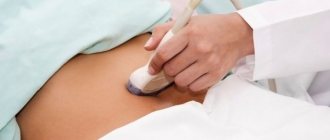Once in favorable conditions (optimal thermal conditions, environment, humidity, the presence of food “predilections”), all microorganisms begin to actively grow and multiply. This is the law of nature. If similar processes occur in the human body, under the influence of changes in microflora, a disease or some pathology develops. You can determine the pathogen, its quantity, type and how it reacts to medications by doing a microflora culture.
Other innovative diagnostic tests may not always accurately identify the bacteria, producing false positive or false negative results. These include polymerase chain reaction, enzyme immunoassay and other methods.
Conditions for the growth of microorganisms
Each type of bacteria requires individual living conditions: a certain level of acidity, humidity, viscosity, osmotic properties. In laboratory conditions, in order to determine the causative agent of the disease, it is sown on certain media, taking into account the characteristics of respiration, nutrition and reproduction of microorganisms.
There are environments in which several different types of bacteria can multiply and grow. Such living conditions are called universal (Sabouraud's medium, thioglycolate). Others are for one strain only (for example, staphylococcus and streptococcus are plated on saline or blood agar).
Purpose and significance of diagnosis
Microorganisms that land on human mucous membranes and skin can be divided into the following groups:
- Normal microflora are those bacteria that are permanent, safe residents. Without them, the human body cannot function properly, since representatives of normal microflora are involved in the processes of digesting food, synthesizing vitamins and enzymes. An insufficient number of microorganisms leads to the development of dysbiosis or bacterial vaginosis.
- Opportunistic pathogens - these strains are safe for humans only if the immune system is strong. If their living conditions change, bacteria begin to actively grow and multiply, causing pathology or disease.
- Pathogenic (disease-causing) microorganisms - they do not live in a healthy body. When accidentally infected, they cause the development of the disease, even death.
Microflora testing and sensitivity to antibiotics play a major role in the process of identifying bacteria, their strain, and species. This method is important for diagnosing diseases of infectious origin and sexually transmitted diseases.
What indicators should be normal?
A bacteriological analysis of the flora in a healthy person will show the presence of beneficial microorganisms that perform protective functions, preventing pathogens from penetrating the mucous membranes of the nasopharynx.
If the analysis is carried out correctly, a small concentration of opportunistic microflora is determined in the throat of a healthy person. Its values should not exceed the result from 103 to 104 CFU/ml.
If the analysis shows an excess of the permissible number of opportunistic microorganisms, this indicates the presence of microflora in the person’s nasopharynx, which is the cause of the development of diseases of the ENT organs.
Staphylococcus
Staphylococcus aureus, the norm of which should not exceed 104 CFU/ml, is an opportunistic microorganism. This means that it is contained in minimal quantities on the nasopharyngeal mucosa and does not provoke the development of any diseases of the ENT system.
Exceeding the norm indicates infection with staphylococcus, which is the cause of the development of the following diseases:
- sore throat and pharyngitis;
- stomatitis, tonsillitis;
- sinusitis;
- gingivitis.
Active growth of staphylococcus is associated with a decrease in the protective functions of the immune system. Children and elderly people are at risk. Treatment is carried out with antibacterial spectrum drugs.
Streptococcus
Streptococcus is an opportunistic microorganism. It is found in minimal quantities on the mucous membranes of the nasopharynx. It is a provocateur of sore throat and scarlet fever. The presence of an increased concentration of pathogenic microflora in the nose can cause the development of bacterial sinusitis.
The development of an infectious process in the nasopharynx is indicated by a streptococcus indicator of 105 CFU/ml. The diagnosis is made by the presence of a specific symptomatic picture in a person.
Candida fungi
Determination of a concentration of Candida fungus in the throat of 105 CFU/ml or more indicates that the patient is infected with candidiasis. The disease develops quickly, has a pronounced and intense symptomatic picture, and can provoke the development of complications in the respiratory system. The norm is the complete absence of fungus in a throat swab or the maximum permissible amount is not higher than 104 CFU/ml.
Indications for testing
Microflora culture is not carried out as an independent analysis. It is prescribed by a doctor in cases where there is a suspicion that a pathogenic pathogen has entered the patient’s body or the growth and reproduction of opportunistic bacteria has been activated.
The following diagnostic measures are carried out:
- urogenital bacterial culture;
- bacterial culture from the nose, ear, pharynx, eye;
- bacterial culture of microflora from the wound;
- culture of urine, milk, bile, sperm, feces;
- bacterial culture for staphylococcus, mycoplasma, ureaplasma and other pathogens.
Analysis results
The test results are prepared approximately 5-6 days after taking a smear. During this period, all microorganisms present will grow in sufficient quantity and size for research. In approximately a week, you will be able to get a report from the gynecologist on the tank you passed. sowing
Such a study of biomaterial shows the presence of each type of microorganism, as well as their quantity. If no pathogenic microorganisms are identified, but the number of beneficial bacteria is below normal, special agents are prescribed to normalize the vaginal microflora. The lack of beneficial microorganisms further leads to infections and inflammations caused by various pathogens. The main beneficial representatives of the cervical canal are lactobacilli and bifidobacteria.
The pathogenic environment is determined by the following commonly detected microorganisms:
- different varieties of mushrooms;
- enterococci and E. coli above the permissible limit;
- different types of staphylococcus;
- citrobacter;
- Proteus;
- gardnerella;
- leptothrix;
- Trichomonas.
Parasitic microbes such as uroplasma and chlamydia are common bacteria. are not detected by culture, since they live inside the cell, so they can only be diagnosed using a more detailed and complex analysis, where the collected cells are examined for parasite DNA.
Standard results tank. crops are characterized by assigned degrees of purity of the cervical canal. There are four of them, depending on the number of pathogenic bacteria present. The number of the latter is marked by colonies - separate areas of accumulations of their cells.
The analysis is considered negative in the absence of any type of “bad” microorganism, and positive if at least a minimal number of them is detected in the biological material.
Each degree of bacterial growth has its own characteristics:
- the first indicates single pathogenic bacteria of weak growth and reproduction;
- the second is the presence of up to 10 colonies of a certain type of microbe;
- third – the range of bacterial colonies from 10 to 100;
- the fourth – over 100 colonies.
Inflammatory and infectious processes begin to develop from the third degree of bacterial growth. This will also be evidenced by an exceeded normal limit for the leukocytes contained. In this case, immediate and appropriate treatment is required, in accordance with the identified family of the main causative agent of infection.
It is the determination of the sensitivity of microorganisms to specific antibiotic drugs that is the undoubted advantage of tank. sowing
How to decipher the results
After receiving the results, I want to get acquainted with them immediately. The laboratory form states the following:
- Type of pathogen in Latin. Translating titles usually poses the greatest difficulty for curious readers. After reviewing the results, the doctor will tell you more about the type of pathogen and the characteristics of its reproduction.
- Quantitative indicators of microorganism growth. In most cases, colony-forming units of cells per 1 ml of material are used. For example, bacterial culture for microflora and sensitivity to antibiotics in urine with normal values should contain up to 10 3 CFU/ml. Results with high values may be questionable or indicate the presence of an inflammatory process.
- Clarification of the pathogenicity of the strain. This paragraph indicates whether the microorganism is pathogenic or opportunistic, living on the mucous membranes of the human body.
Question: How are the results of a throat smear interpreted?
The site provides reference information for informational purposes only. Diagnosis and treatment of diseases must be carried out under the supervision of a specialist. All drugs have contraindications. Consultation with a specialist is required!
How are the results of a throat smear interpreted?
To decipher the results of a throat smear, you need to know the meaning of the indicators indicated on the form in the form of a table or list. Let's consider each indicator and its specific meaning.
The result will indicate the name of one or more microorganisms that were identified in the nasal swab. Most often their names are written in Latin, for example, Klebsiella pneumoniae, Streptococcus pyogenes, Candida albicans, etc. All of these microbes, as a result of a throat smear, make up the vast majority of representatives of the microflora of the mucous membrane of the throat. For example, the smear says Streptococcus pyogenes. This means that the main microflora on the mucous membrane of the pharynx is streptococcus.
Next to the name of the microorganism or in the corresponding column of the table, its quantity is indicated. Moreover, the number of microbes is measured in special units - CFU/ml. CFU is an abbreviation for colony-forming unit. That is, the number of bacteria on the mucous membrane of the pharynx is measured in the number of CFU that grow in one liter of nutrient medium.
However, these terms are too abstract, so let’s look at how CFUs are counted in reality. The collected swab from the throat is brought to the laboratory, where special nutrient media have already been prepared, which are designed specifically for the growth of various bacteria. A loop is passed over the surface of the media and left in a thermostat so that the inoculated bacteria can grow. From bacteria applied to the surface of the medium, entire colonies grow, looking like spots of different shapes. Each spot is a collection of bacteria, which scientists call a colony. From this colony you can grow many new ones by reseeding. That is why such clusters of bacteria grown on a nutrient medium from a smear are called colony-forming units.
After colonies of microbes grow on the nutrient medium, the bacteriologist counts their number using various methods. The most commonly used method is serial dilution, in which 1 ml of the original biological material is diluted 10 times and added to a second tube. Then 1 ml from the second test tube is again diluted 10 times and added to the third test tube. At least 10 such successive dilutions are made. Then, material is taken from all test tubes with dilutions and sown on a nutrient medium. The maximum concentration of CFU is considered to be the dilution in which microbes no longer grow. For example, colonies grew from the fifth tube on the medium, but not from the sixth. This means that CFU/ml is equal to the dilution from the 6th tube, which is 10 6 .
Determination of pathogen sensitivity
If the strain of a pathogenic microorganism is determined, it is inoculated in the laboratory on media with antibiotics. About those environments where growth will be the smallest or negative, specialists make notes on the result form. These antibacterial agents are considered the most effective when choosing treatment for the inflammatory process.
Since microflora culture is a fairly lengthy process (up to 7 days), drugs with a wide spectrum of action are first prescribed. Most microorganisms are resistant to one or another medication, which means a weekly dose may not only be ineffective, but also cost the patient a lot of money.
An antibioticogram, the decoding of which also requires the participation of a specialist, will allow you to choose the only effective remedy. The laboratory form indicates the following:
- strain and type of pathogen, its quantity in CFU/ml;
- names of antibacterial drugs indicating sensitivity (R, S, I) and zone.
Antibioticogram (decoding of Latin letters) says the following:
- R—pathogen resistant to the drug;
- I - the microorganism exhibits moderate resistance;
- S is a bacterium sensitive to this antibiotic.
Diagnosis and treatment of bacterial overgrowth syndrome
In the proximal small intestine, gram-positive aerobic bacteria are the most common species, while gram-negative anaerobic bacteria are more common in the distal small intestine. The mass of the normal intestinal microflora of an adult is more than 2.5 kg, the number is 1014 CFU, and the general genome of bacteria - the “microbiome” - includes 400 thousand genes, which is 12 times larger than the human genome [1]. In healthy people, normal intestinal microflora is maintained by such basic physiological mechanisms as the pH level of hydrochloric acid in the stomach, the activity of the secretory function of the pancreas and choleresis, motility of the small intestine and the structural integrity of the gastrointestinal tract. Disruption of any of these protective mechanisms can lead to the development of bacterial overgrowth syndrome (SIBO) in the small intestine [2].
There are a number of factors that help maintain the quantitative and species constancy of the microbial landscape of the human intestine:
- genetic predisposition;
- acidic stomach environment;
- normal motor-evacuation function of the gastrointestinal tract;
- anatomical sphincters of the gastrointestinal tract;
- constant level of intraluminal pH in different biotopes;
- state of the immune system of the mucous membranes (SM);
- bactericidal substances produced by CO (lysozyme, lactoferrin, etc.);
- phagocytic activity of CO macrophages;
- secretory immunoglobulin class A;
- bacterial colicins and microcins (endogenous peptide antibiotics of microbial origin) [3].
SIBO in the small intestine is a pathological condition based on increased colonization of the small intestine with fecal or oropharyngeal microflora, accompanied by chronic diarrhea and malabsorption, primarily of fats and vitamin B12. An increase in the amount of opportunistic microflora in the small intestine is detected in 70–95% of cases of chronic intestinal pathology. With SIBO, not only does the number increase, but the spectrum of microorganisms also changes, with a shift towards gram-negative bacteria and anaerobes. In 30% of healthy people, the jejunum is normally sterile, in the rest it has a low population density, which increases as it approaches the colon, and only in the distal ileum is fecal microflora detected: enterobacteria, streptococci, anaerobes of the genus Bacteroides, etc. [ 4].
The most important etiological factors for SIBO include:
- dysfunction of the ileocecal valve (inflammatory, tumor processes, primary functional failure);
- consequences of surgical operations (anatomical or surgically formed blind loop; small intestinal anastomosis or fistula, vagotomy, cholecystectomy, small intestinal resection);
- gastrointestinal diseases associated with motor disorders: gastrostasis, duodenostasis, stasis of contents in the small and large intestines (chronic constipation, including in patients with diabetes);
- disorders of cavity digestion and absorption (maldigestion and malabsorption), including those associated with achlorhydria of various origins (operated stomach, chronic atrophic gastritis, long-term use of proton pump inhibitors (PPIs)), exocrine pancreatic insufficiency (chronic pancreatitis), biliary pathology pathways (cholelithiasis, chronic cholecystitis);
- enteropathy (disaccharidase deficiency and other food intolerances);
- long-term nutritional imbalance;
- chronic inflammatory bowel diseases, diverticulitis, short bowel syndrome;
- the entry of bacteria from the extraintestinal reservoir (for example, with cholangitis);
- local and systemic immune disorders - radiation, chemical exposure (cytostatics), AIDS;
- antibiotic therapy;
- stress of various origins;
- tumors of the intestine and mesenteric lymph nodes [5].
Various diets for weight loss, “cleansing” with the use of volumetric enemas, and especially colon hydrotherapy, which has some popularity, but is strongly not recommended by gastroenterologists around the world, have a negative impact on the microbial landscape of the intestines, since it grossly disturbs microbial biotopes.
Characterizing SIBO requires not only counting the absolute number of bacteria, but also their species typing, which determines the manifestation of signs and symptoms. If overgrowth of bacteria that metabolize bile salts into unconjugated or insoluble compounds predominates, fat malabsorption or bile acid diarrhea develops. Deconjugated bile acids can have a toxic damaging effect on enterocytes, which disrupts the assimilation of not only fats, but also carbohydrates and proteins. With overgrowth of bacteria, which preferentially metabolize carbohydrates into short-chain fatty acids and gas, bloating without diarrhea predominates in the clinic, since the resulting metabolic products can be absorbed. Gram-negative coliforms, such as Klebsiella, produce toxins that damage intestinal CO, impair absorption and increase secretion.
Symptoms of SIBO are not specific: flatulence, bloating, abdominal pain or discomfort, diarrhea, fatigue, weakness, weight loss; they reflect the degree of prevalence of inflammation of the intestinal tract and are superimposed on the manifestations of the underlying disease, which is the cause of the development of SIBO. More severe symptoms indicate complications of SIBO, including malabsorption, nutrient deficiencies, and bone metabolism disorders. The nonspecificity of these symptoms often causes diagnostic errors and requires a differential diagnosis with irritable bowel syndrome, lactose or fructose intolerance.
SIBO should be considered in any patient with diarrhea, steatorrhea, weight loss and macrocytic anemia who complains of flatulence, cramping abdominal pain and erratic bowel function, as well as chronic cytolysis syndrome [6].
Verification of bacterial overgrowth in the small intestine is carried out using direct and indirect methods for diagnosing this syndrome. The “gold standard” for diagnosing SIBO is microflora culture; this requires aspiration of the contents of the small intestine with immediate culture of the aspirate on a nutrient medium. But bacterial overgrowth can affect the most distal parts of the small intestine, which are beyond the reach of instrumentation [7].
Stool culture, which is used in our country as a method for assessing the microbial biocenosis of the intestine, is considered to be uninformative, since even with maximum compliance with the rules for conducting microbiological studies, it can only give an idea of 12–15 typable species of bacteria in the distal colon [8]. Stool examination can be used to search for specific infectious pathogens or helminthic infestations.
There are other methods based on studying the concentration of indican produced by indole-positive microorganisms, phenol and paracresol, which are metabolites of aerobic (to a lesser extent) and anaerobic (to a greater extent) microorganisms, as well as a method for diagnosing the state of microbiocenosis of various biotopes, incl. intestines, based on the determination of short-chain (monocarboxylic) fatty acids, which are metabolites of mainly anaerobic genera of microorganisms, by gas-liquid chromatographic analysis [9]. Indirect methods include tests based on the study of microflora metabolites: 14C- or 13C-glycocholate, 14C-D- or 13C-D-xylose breath tests, which require isotopes and a specialized laboratory. The most used throughout the world are lactulose hydrogen breath tests (HLBT), glucose, lactose and other sugars.
Hydrogen breath tests are simple, informative and non-invasive methods that have been developed to diagnose various diseases of the digestive tract, primarily to determine carbohydrate malabsorption and bacterial overgrowth in the small intestine. Currently, these diagnostic methods are rapidly being introduced into clinical practice all over the world [10].
In 2008, the Rome Consensus on Hydrogen Tests was adopted, which sets out the recommendations of international experts for clinical practice regarding the indications and methods of conducting H2 breath tests for diseases of the digestive tract [11]. However, many practicing physicians not only do not know the main provisions of the consensus, but are still not familiar with these tests at all, do not know their diagnostic capabilities, certain limitations and disadvantages.
Hydrogen breath tests using carbohydrates (glucose, lactulose, fructose, lactose, etc.) have been carried out since the 1970s. In one study, JM Rhodes, P. Middleton, DP Jewell examined HFDT as a diagnostic test for SIBO, with a C14-glycocholate breath test used for comparison. LVDT was positive in 8 of 9 patients, and they also had a positive C14-glycocholate test, but in another 6 patients with a positive C14-glycocholate test, LVDT was negative. Subsequent bacteriological examination of duodenal juice for bacterial overgrowth in these patients was also negative. Negative LVDT results were obtained in 12 patients, none of whom were subsequently found to have bacterial overgrowth. LVDT is a simple and promising diagnostic test for identifying bacterial overgrowth in the small intestine. Unlike the C14-glycocholate test, LVDT makes it possible to detect bacterial overgrowth in various parts of the small intestine [12].
The lactulose test is the most common non-invasive test for determining the intestinal transit time of various carbohydrates. An early peak in H2 concentration indicates SIBO; a delayed increase in H2 concentration indicates an increase in intestinal transit time. This test is now used by all leading clinics in the world for the timely detection of SIBO in the small intestine [13–17].
In our work, in choosing a diagnostic algorithm for SIBO, we adhere to the following principles proposed by D. Drossman:
- determine whether the patient has a clinical profile of small intestinal bacterial overgrowth with postprandial abdominal discomfort, bloating, and possibly loose stools;
- if clinical signs are present, test with LVDT (if available);
- if the LVDT result is positive, prescribe an antibiotic or broad-spectrum enteroseptic;
- after this treatment, prescribe the patient a probiotic to restore the deficiency of “good” bacteria;
- if stool returns to normal or a tendency to constipation develops, consider the inclusion of prokinetics to accelerate small intestinal transit;
- if symptoms recur and the previous LVDT was positive, repeat the study and course of antibiotics (enteroseptics) if the LVDT is again positive;
- if LVDT is not available, the physician should use conservative methods and not repeat treatment if the effect of the course of antibiotics (enteroseptics) lasts for at least several months [18].
When SIBO is detected, the doctor is faced with the question of treatment tactics. The treatment regimen should include antibacterial therapy (ABT), and then, if necessary, pro- and prebiotics in order to restore the microbiotic landscape. Also, the treatment regimen should include measures or drugs to eliminate the underlying cause of the disease or its symptoms. Strict adherence to the diet may improve symptoms in patients with celiac disease, which is often associated with SIBO. Surgical correction of intestinal diseases may be necessary for patients with SIBO, which developed against the background of colonic diverticulosis, intestinal fistulas or strictures. Patients with gastroparesis or intestinal motility disorders, the main cause of SIBO, should be treated with prokinetics (eg, itopride hydrochloride) [19–21]. Nutritional support, especially in patients with weight loss or vitamin and mineral deficiencies, is also an important component of SIBO treatment. Complexes containing vitamin B12 and fat-soluble vitamins, calcium and magnesium are key components of treatment.
The mainstay of treatment for SIBO is ABT [22]. Some foreign authors advocate empirical treatment of patients suspected of having SIBO, without diagnostic testing [23]. However, this approach is problematic due to the frequent placebo effect, the high cost of antibiotics, potential complications (eg, drug interactions, side effects), and the need for usually repeated courses of antibiotic therapy. A study by M. di Stefano et al. showed that the average duration of clinical improvement with empirical treatment is only 22 days, and this treatment strategy leads to the need for at least 12 seven-day courses of antibiotic therapy per year to alleviate the condition of patients with SIBO and constipation [24].
Most antibacterial drugs (ABPs) used today to treat SIBO have a weak evidence base. Ideally, ABT should be prescribed based on the results of bacterial culture and determination of pathogen susceptibility, but this approach is not acceptable in clinical practice due to its complexity [25].
Many authors recommend the use of broad-spectrum antibiotics that are effective against anaerobic bacteria: rifaximin (400–600 mg 2 times a day), ampicillin (orally 0.5 g 4 times a day), metronidazole (orally 500 mg 3 times a day ), ciprofloxacin (500 mg 2 times/day), norfloxacin (800 mg/day), vancomycin (125 mg 4 times/day) [4, 5]. Sometimes repeated courses lasting from 7 to 14 days are required.
The experience of using probiotics in the complex treatment of SIBO deserves special attention. Probably the first scientist to publish works on probiotics at the beginning of the twentieth century was our compatriot, Nobel Prize laureate I.I. Mechnikov. He described centenarians in Eastern Europe who drank Bulgarian-fermented milk, and suggested that proteolytic microbes in the colon produced toxic substances responsible for the aging process, and that consumption of fermented milk products lowered the pH of the colon, inhibiting the growth of proteolytic bacteria, and thus leading to a slowdown in the aging process [26]. Researchers and clinicians around the world are studying and using probiotics for various diseases. In the last 10 years, more than 5 thousand articles have been published on the use of probiotic preparations [27].
L. Richard and R. Parker in 1977 used the term “probiotic” to refer to living microorganisms and their fermentation products that have antagonistic activity against pathogenic microflora. According to the WHO/FAO definition, probiotics are live microorganisms, used in adequate quantities, that have a healing effect on the human body. Probiotics are also defined as drugs based on intestinal commensals that are capable of exerting biological control in the body and have regulatory and trigger properties.
Potential effects of probiotics [28–31]:
- modulation of intestinal immunity, alteration of inflammatory cytokine profiles and reduction of proinflammatory cascades or activation of strain-specific regulatory mechanisms;
- inhibition of pathogenic gas-producing and deconjugating bile salt bacteria, reducing their adhesion;
- changing the bacterial flora by acidifying the colon through fermentation of the nutrient substrate;
- increasing epithelial barrier function;
- induction of μ-opioid and cannabinoid receptors in intestinal epithelial cells;
- reduction of visceral hypersensitivity, spinal afferentation and stress response.
Modern probiotics must meet the following criteria [32]:
- contain microorganisms whose probiotic effect has been proven in randomized controlled trials;
- have stable clinical effectiveness;
- be pheno- and genotypically classified;
- to be kept alive;
- be non-pathogenic and non-toxic, do not cause side effects with long-term use;
- have a positive effect on the host organism (for example, increase resistance to infections);
- have colonization potential, i.e. persist in the digestive tract until the maximum positive effect is achieved (be resistant to high acidity, organic and bile acids, antimicrobial toxins and enzymes produced by pathogenic microflora);
- be acid-resistant or enclosed in an acid-resistant capsule;
- be stable and retain viable bacteria over long periods of storage [33].
Fundamental requirements are also imposed on the bacterial strains on the basis of which probiotics are created. They have to:
- be isolated from healthy people and identified to species based on pheno- and genotypic characteristics;
- have a genetic passport;
- have a wide range of antagonistic activity against pathogenic and opportunistic microorganisms;
- should not inhibit normal microbiocenosis;
- be safe for humans (including immunological safety);
- production strains must be stable in biological activity and meet technological requirements.
Linex® meets all of the above requirements. It contains Lactobacillus (L.) acidophilus, Bifidobacterium (B.) infantis, Enterococcus (E.) faecium, the content of which is at least 107 microbial bodies. The microorganisms that make up the drug are enclosed in a capsule that opens in the stomach. However, due to the high acid resistance of all components of the drug, bacteria are not destroyed in the stomach, and the drug is able to have a probiotic effect at all levels of the gastrointestinal tract. The combination of lacto- and bifidobacteria with proven probiotic properties in the drug provides a symbiont effect during colonization of the large intestine, and the presence of an aerobic microorganism, enterococcus, contributes to the active immunomodulatory and bactericidal effect of the drug at the level of the stomach and small intestine. The microbes included in the Linex® drug are resistant to most antibiotics, which allows the drug to be used against the background of ABT. The resistance of the resulting strains is maintained upon repeated inoculation for 30 generations and in vivo. Studies of the drug Linex® have shown that transfer of resistance to other microorganisms does not occur [34]. If necessary, Linex® can be used simultaneously with anti-inflammatory drugs and chemotherapeutic agents. The effectiveness of the components of the drug Linex®, their combinations and the drug itself has been proven in clinical studies for various gastrointestinal diseases [35].
The advantage of Linex® is its high safety. With its widespread use over many years, no side effects have been recorded. Linex® does not have a teratogenic effect. Its safety and good tolerability make it possible to use the drug in patients at risk: pregnant and breastfeeding women, children, including newborns, the elderly, etc. The quality of Linex® is also guaranteed by its production technology, which meets all the requirements for the production of probiotics.
At the Department of Microbiology of the Kemerovo State Medical Academy, a study was carried out on the contents of Linex® capsules.
Microscopic examination of a Gram smear from a suspension of the capsule contents revealed the presence of 3 morphotypes of Gram-positive bacteria: regular spherical diplococci, thick pleiomorphic rods with swellings at the ends, shaped like a “slingshot,” and thin single rods with rounded ends. No foreign bacteria were identified in the composition of the drug.
On MRS medium, lactobacilli formed medium-sized (2–4 mm), slightly convex grayish moist colonies. Gram smears show thin gram-positive rods with rounded ends, arranged in random clusters. The quantitative content of L. acidophilus in 1 dose of the drug is 2x107 CFU/ml. The acid-forming ability of lactobacilli reached 102.4°T. Lactobacilli were characterized by average adhesive activity, since the adhesiveness index (AAI) was 2.71. L. acidophilus was resistant to the following antibiotics: amikacin, gentamicin, neomycin, ceftriaxone, ceftazidime, amoxicillin. Intermediate resistance was detected to ciprofloxacin and roxithromycin. The sensitivity of L. acidophilus to imipenem, meropenem, ofloxacin, and sparfloxacin has been established.
On bifidum medium, bifidobacteria formed medium (2 mm) and large (5 mm) convex, opaque, moist colonies. Gram smears show thick, short and long, slightly curved gram-positive rods with thickenings at the ends. The quantitative content of B. infantis in 1 dose of the drug is 1.5x107 CFU/ml. Acid formation – 98.94°T. Bifidobacteria had the highest adhesive ability among all members of the consortium under study, although the indicators fell within the average values, since the IAM was 2.83. B. infantis was resistant to the following antibiotics: imipinem, meropenem, amikacin, gentamicin, neomycin, ceftriaxone, ciprofloxacin, ceftazidime, amoxicillin. The culture was sensitive to ofloxacin, sparfloxacin, and roxithromycin.
On enterococcus agar, E. faecium formed medium-sized (3 mm) pinkish flat tetrazolium-negative colonies. On blood meat-peptone agar, the absence of a hemolysis zone around the colonies was observed. Gram smears contain large, spherical gram-positive bacteria arranged in short chains. The quantitative content of E. faecium in 1 dose of the drug is 2x106 CFU/ml. Acid-forming activity corresponded to 48.5°T. The adhesive activity of enterococci was lower than that of other probiotic strains studied; IAM was 2.63, which corresponds to the average values of the trait. E. faecium was resistant to the following antibiotics: imipinem, meropenem, amikacin, amoxicillin, ceftazidime, ceftriaxone. Intermediate resistance was observed against roxithromycin, neomycin, and gentamicin. Sensitivity to ciprofloxacin, sparfloxacin, ofloxacin and chloramphenicol has been established.
Thus, Linex® is characterized by the following microbiological characteristics: the bacterial content in 1 dose of the drug was at least 107 CFU/g, the consortium includes L. acidophilus, B. infantis, E. faecium. The total acid formation activity is 249.84°T. The adhesive activity of all strains in the consortium ranges from 2.63 to 2.83. All strains of the consortium were resistant to β-lactam antibiotics (amoxicillin, ceftriaxone, ceftazidime) and aminoglycosides (gentamicin, amikacin), which allows Linex® to be prescribed while taking the corresponding antibiotics.
It is very important to remember that the recurrence rate of SIBO, even after successful treatment, remains high. E. C. Lauritano et al. found relapses of SIBO in 44% (35/80) of patients after 9 months. after successful treatment with rifaximin. In addition to having an underlying disease causing SIBO, the authors identified other risk factors for recurrence of SIBO: older age (odds ratio (OR) 1.1), history of appendectomy (OR 5.9), and long-term PPI treatment (OR 3.5) [ 36].
Conclusion
SIBO is defined as an increase in the number and/or change in the types of bacteria in the upper gastrointestinal tract. The etiology of SIBO is typically associated with disruption of protective antibacterial mechanisms (eg, achlorhydria, exocrine pancreatic insufficiency, immunodeficiency syndromes), anatomical abnormalities (eg, minor intestinal obstruction, diverticula, fistulas, and surgical correction of the blind loop, resection of the ileo-blind intestines) and/or motility disorders.
SIBO is often misdiagnosed and is generally not a disease in its own right. Clinical symptoms may be nonspecific (dyspepsia, bloating, abdominal discomfort). However, SIBO can cause severe problems such as maldigestion and malnutrition. Non-invasive PVDT is most often used to diagnose SIBO. Therapy for SIBO should be comprehensive and include treatment of the underlying disease, normal nutrition and a course of intestinal sanitation with the use of antibiotics, and then restoration of the microflora with the help of pre- and probiotics. The probiotic of choice may be Linex®, which is highly effective in treating intestinal diseases, including SIBO. The recommended duration of use is at least 2 weeks. The prognosis of SIBO is usually serious and is determined by the course of the underlying disease that led to its formation.
RU1508363167
Preparation for collecting material
Any biological fluids and smears taken from mucous membranes can serve as diagnostic material. More often, a smear for bacterial culture is prescribed by specialists in the field of urology and gynecology. To get the correct results, you need to properly prepare for collecting the material.
If the culture is performed on the patient's blood, then no special preparation is required. The only condition is to take the test on an empty stomach. The health worker takes venous blood, observing all the necessary rules of asepsis and antisepsis.
The conditions for donating urine are slightly different. In a healthy person, it is located in the bladder in the form of a sterile biological fluid. When urine passes through the female urethra, a small number of cocci can enter the material, which is taken into account during diagnosis and is considered normal (staphylococcus and streptococcus, diphtheroids). In men, the supply of urine with bacteria occurs in the anterior part of the urethra.
Even more interesting:
Why is Unidox prescribed to women?
Growth of normal flora in the throat has been detected, what does this mean?
To determine the causes of the development of diseases of the upper respiratory tract, a swab is taken from the throat - this diagnostic method will help identify the type of causative agent of infectious and inflammatory processes.
For the analysis to be accurate, you need to properly prepare for collecting biological material.
Indications for the procedure
A smear is taken to study the composition of the microflora of the nasopharynx, to identify the causative agent of the pathology, and its sensitivity to antibiotics.
In what cases is a smear prescribed:
- prolonged runny nose that does not go away for more than 7 days;
- allergy;
- frequent relapses of pharyngitis, tonsillitis, laryngitis;
- diagnosis of streptococcal sore throat;
- the presence of manifestations of infections caused by Staphylococcus aureus;
- if you suspect diphtheria, whooping cough, meningitis, fungal pathologies;
- tuberculosis;
- sinusitis, adenoiditis;
- mononucleosis, abscesses.
A throat swab is part of a preventive examination; the test is prescribed for children attending educational institutions, health workers, people who work with food or in preschool and school institutions.
A smear to determine the composition of the microflora of the ENT organs is prescribed to all pregnant women.
Preparation for collecting material
Compliance with the rules of preparation for taking a smear largely determines the reliability of the results.
Preparation rules:
- stop taking antibacterial drugs in the form of tablets for a week;
- 5 days in advance, stop using sprays, ointments, rinses with antibacterial and antiseptic effects;
- Before collecting material from the oropharynx, you should not eat, drink, chew gum, or smoke; if it is necessary to do an oral cavity analysis, it is contraindicated to brush your teeth.
Stop taking antibiotics a week before your test.
How to properly take a swab of both the throat and nose?
The reliability of the analysis is also affected by the professionalism of the medical personnel; if there are errors during the collection, storage and transportation of the biomaterial, the culture result will be unreliable.
Procedure technique:
- The patient opens his mouth wide and throws his head back.
- The nurse presses on the tongue with a sterile or disposable spatula and collects mucus and plaque from the mucous membranes of the pharynx and tonsil surfaces with a cotton swab.
- The resulting material is placed in a test tube with a nutrient solution, which allows the bacteria to remain viable during transportation.
- The resulting biomaterial is sent to the laboratory, delivery time is no more than 2 hours.
Taking a smear is a painless but unpleasant procedure; pressing on the tongue can provoke an attack of vomiting, especially if the material is taken from a child.
Before examining the nasal mucosa, mucus is removed, crusts are removed, and the skin of the nostrils is lubricated with medical alcohol. The patient tilts his head back a little, and a sterile swab is passed alternately along the walls of the right and left nasal passages. The samples collected in a test tube are sent to the laboratory.
Methods for studying biomaterial
During microscopic examination, the resulting biomaterial is Gram stained and examined after treatment with immersion oils. The method allows you to identify gram-positive and gram-negative bacteria, coccal flora, and coccobacilli.
Bacteriological culture is one of the main diagnostic methods, since each microorganism can multiply only in a certain environment, at a comfortable level of pH and humidity; during the study it is important to maintain complete sterility.
Bacteriological culture is the main type of diagnostics for identifying pathogenic microorganisms
If an increase in microflora is detected, antibiotic sensitivity tests must be carried out; many microbes are able to quickly develop immunity to drugs - in the presence of ineffective therapy, severe complications develop.
A fingerprint smear is a specific analysis for studying the composition of cells in the nasal mucosa. The sample is applied to a glass slide, and the number of eosinophils and other particles is counted. The study is prescribed if you are predisposed to allergies.
If antibacterial therapy is ineffective, phage sensitivity tests are performed. The result allows us to select bacteriophages to eliminate the manifestations of infectious pathologies - these are modern antimicrobial drugs that cause the death of only certain types of bacteria.
Decoding the analysis results
About 50 beneficial microbes, representatives of saprophytic and opportunistic microflora live on the mucous membranes of each person; the study of discharge from the throat and nose makes it possible to determine the quantitative ratio and composition of etiologically significant microorganisms.
List of microbes
| Safe microorganisms: | Dangerous microorganisms |
|
|
The result is entered into the form, indicating the genus, type, number of microorganisms, and level of pathogenicity. After determining the type of pathogen, tests are carried out to determine the sensitivity of microbes to antibacterial agents and bacteriophages.
A negative result indicates the absence of fungi and pathogenic bacteria, which means that the infection is of viral origin. A positive result is observed in the presence of dangerous microorganisms, or the active growth of representatives of opportunistic microflora.
In terms of time, a bacteriological examination takes 5–7 days; in emergency cases, a rapid test is done to identify antigens to bacteria and fungi; the result can be obtained within half an hour.
What do increased indicators mean?
The presence of a large number of fungi and bacteria in a smear is a sign of the development of ENT diseases; each microorganism provokes certain pathologies.
Exceeding the norm of staphylococci is most often observed in children
What diseases are caused by pathogenic microorganisms:
- staphylococci - pharyngitis, tonsillitis, gingivitis, sinusitis, active growth of bacteria is most often observed in children and the elderly;
- streptococci - sore throat, scarlet fever, sinusitis;
- fungi of the genus Candida - oral candidiasis, often accompanied by complications that affect the organs of the respiratory system;
- pneumococci, neisseria - pneumonia, bronchitis, otitis media, osteomyelitis, diseases of the upper respiratory tract, oropharynx;
- diphtheria pertussis, normally there are no bacteria in the smear; if the result is positive, the concentration level of microbes is determined to make a conclusion about the degree of development of the pathology;
- hemolytic streptococcus - severe forms of sore throat, which almost always cause heart complications.
With indicators of more than 10*5–10*7 CFU/ml, the likelihood of developing inflammatory, infectious, purulent processes is maximum. The draining result is a very high content of pathogenic microbes, their number cannot be counted, it is observed in severe and advanced forms of the disease, and urgent antibacterial therapy is required.
A nasopharyngeal smear is an effective method for diagnosing diseases of the ENT organs, determines the type of causative agent of the pathological process, the stage of development of the disease, allows you to select effective methods of therapy and reduce the risk of complications.
Nasal and throat swab
A swab from the throat and nose is taken if there is a focus of inflammation in the nasopharynx. The purpose of this analysis is to detect the causative agent of infection. In addition, biomaterial is collected to exclude some more serious diseases, for example, diphtheria.
Microflora of the nasopharynx
On the surface of the mucous membrane of the nasopharynx and oropharynx there are a large number of different microorganisms. Among them there are not only beneficial, but also opportunistic microbes. In a healthy person, they all make up the general microflora, without causing various diseases. But a lot depends on their quantitative composition.
If some favorable conditions for bacteria are created, for example, a decrease in immunity against the background of hypothermia, influenza, etc., then lightning activation of microbes occurs with their intensive reproduction. In addition, diseases can develop during primary infection of the body, in which microbes settle on the mucous membranes of the respiratory tract.
In a normal smear, in the absence of severe symptoms, there are Escherichia coli, streptococcus and staphylococcus, Neisseria, Klebsiella, fungi and many others. It is interesting that almost 25% of the world's population has Staphylococcus aureus in a smear, but infection with it and further development of the disease is never observed.
Staphylococcus aureus grown on a nutrient medium
Among all the bacteria, it is worth noting those that can cause serious diseases: pneumococcus, streptococcus, meningococcus, Loeffler's bacillus, fungi, Haemophilus influenzae bacillus, Branchhamella and many others.
Stool culture
The intestinal tract has permanent “residents” who participate in the processes of digestion, the synthesis of vitamins and enzymes. The ratio of bacteria is constant and may fluctuate slightly in one direction or another.
When immune forces are reduced, pathogens enter the body, or antibiotics are taken for a long time, the normal ratio is disrupted. The number of lactobacilli and bifidobacteria decreases sharply, and their place can be taken by pathogenic strains of Escherichia coli, Proteus, Clostridia, Pseudomonas aeruginosa, yeasts, etc.
Stool for diagnostic purposes is collected in a sterile transport container. The sowing result is ready in 3 to 7 days.
Lactobacillus is a major part of healthy flora
Prevotella melaninogenica
Prevotella is a genus of gram-negative anaerobic, non-spore-forming, rod-shaped bacteria.
The most important of all bacteria is Lactobacillus. Its colonies make up approximately 95% of the normal microflora in a healthy woman. It is lactobacilli that maintain a high level of resistance of the vaginal biocenosis to foreign infections.
Thus, a normal biocenosis can be considered as the absence of gram-negative cells and the dominance of lactobacilli. The number of anaerobic microorganisms to aerobic ones is determined by the proportion from 2:1 to 5:1.
When the number of lactobacilli decreases or disappears completely, bacterial vaginosis occurs. This disease is characterized by the predominance of cocci and a sharp increase in the number of anaerobes.
Crops during pregnancy
During pregnancy, culture is a mandatory diagnostic method and is carried out twice: during registration and at 36 weeks. A smear is taken from the genital tract, as well as the nose and throat. Thus, the presence of urogenital inflammatory processes and carriage of Staphylococcus aureus is determined. Pregnant women also donate urine to be cultured for sterility.
A nuisance that can be detected is E. coli in a smear in women. Treatment for this condition should be immediate. This is especially true for pregnant women, because the presence of pathogenic microflora can lead to infection of the baby during passage through the birth canal. If E. coli is detected in a smear in women, treatment is prescribed by a gynecologist. A combination of local therapy and systemic drugs is used.
The objects of search during the period of bearing a child are chlamydia, fungi, mycoplasma, ureaplasma, and trichomonas.
Symptoms of infections caused by opportunistic microflora
The cause of the occurrence and development of the inflammatory process in the body can only be determined by laboratory tests. Therefore, if something bothers you, do not try to diagnose yourself and prescribe treatment on your own. Contact your gynecologist immediately. But for a general understanding of what happens to the female body during the development of certain infections, it is still advisable to know the symptoms indicating the presence of a particular vaginal infection caused by opportunistic microflora.
Streptococcal and staphylococcal infections occur with symptoms such as:
- inflammation of the vaginal mucosa;
- formation of a wound surface;
- increased body temperature;
- sharp pain in the lower abdomen;
- rapid spread of infection.
Symptoms of vaginal infections are quite unpleasant and cause a lot of trouble.
Vaginal infections caused by enterococci (coli bacteria) can cause a disease such as bacteriuria. Sometimes bacteriuria is asymptomatic, but most often the presence of this disease is indicated by:
- pain when urinating;
- nausea and vomiting;
- pain in the lower abdomen.
Bacterial vaginosis causes an increase in the activity of bacteria such as gardnerella in the vaginal microbiocenosis. With bacterial vaginosis, the composition of vaginal discharge changes, and an unpleasant odor (rotten fish) appears.
Conditions are needed for nutrition and breathing
Microbiologists now know that each pathogen needs its own “native” environment, taking into account its pH, redox potentials, viscosity, humidity and osmotic properties. Media can be soft and hard, simple and complex, universal and not very universal, but in all cases they must provide nutrition, respiration, reproduction and growth of the bacterial cell.
an example of the growth of microorganisms after tank sowing in a nutrient medium
Some media (thioglycolate, Sabouraud) are suitable for a wide range of microorganisms and are called universal. Others are intended only for certain species, for example, pneumococcus and Staphylococcus aureus, which produce hemolysins, grow on blood agar, which serves to isolate particularly “capricious” and, at the same time, dangerous strains. Thus, there are many types of media, where each of them grows its own range of microorganisms.
The purpose of cultivating microorganisms and its significance for diagnosis
In addition to water, air, soil, which contain various microorganisms in varying concentrations, including those that bring disease (pathogenic), many branches of medical science are interested in microbes living on the skin and mucous membranes of the human body, which can be represented by:
- Permanent inhabitants who do not pose any danger to humans, that is, the normal microflora of the body, without which we simply cannot live. For example, the disappearance of bacteria living in the intestines and participating in the digestion process leads to dysbiosis, which is not easy to treat. The same thing happens with the disappearance of vaginal microflora. It is immediately populated by opportunistic microorganisms, gardnerella, for example, which causes bacterial vaginosis (gardnerellosis);
- Opportunistic pathogenic flora, which causes harm only in large quantities under certain conditions (immunodeficiency). The above-mentioned gardnerella is a representative of this type of microorganism;
- The presence of pathogenic microbes that are not present in a healthy body. They are alien to the human body, where they enter accidentally through contact with another (sick) person and cause the development of an infectious process, sometimes quite severe or even fatal. For example, an encounter with the pathogens of syphilis - no matter what, it is treated at first, but (God forbid!) it will unleash cholera, plague, smallpox, etc.
Fortunately, many of them have been defeated and are currently kept under seal in special laboratories, but humanity must be prepared at any moment for the invasion of an invisible enemy capable of destroying entire nations. Bacteriological culture in such cases plays, perhaps, the main role in identifying the microorganism, that is, determining the genus, species, type, etc. (toxiconomic position), which is very important for the diagnosis of infectious processes, including sexually transmitted diseases.
Thus, sowing methods, like nutrient media, are different, however, they have the same goal: to obtain a pure culture without foreign impurities in the form of microbes of other classes that live everywhere: in water, in the air, on surfaces, on humans and inside it.
Why does opportunistic flora grow?
- Taking antibiotics that destroy normal flora and cause dysbiosis.
- Abuse of diets leading to vitamin deficiency.
- Weakening of the immune system associated with past infections and taking medications that impair immunity.
- Incorrectly selected contraceptives . Suppositories, spermicides and other medications to prevent unwanted pregnancy sometimes affect the flora of the genital tract.
- A variety of sexually transmitted infections , including hidden ones.
- intimate hygiene products
- Insufficient hygiene.
As a result, instead of Dederlein's bacilli, opportunistic flora begins to grow in the genital tract - thrush fungi, staphylococci, streptococci, bacteroides, enterobacteria, fusobacteria. Since they do not produce lactic acid, the pH of the vagina shifts to the alkaline side, the self-cleaning process stops, and inflammatory processes occur.
A woman experiences unpleasant discharge with a putrid or fishy odor, itching and irritation in the genital tract, cracks, sores and plaque appear on the external genitalia. Subsequently, the process moves to the urinary system, causing cystitis and urethritis.
When is tank sowing prescribed and how to understand the answers?
Name of microorganism and its quantity
Patients do not prescribe bacteriological analysis to themselves; this is done by the doctor if he has suspicions that the problems of a patient presenting various complaints are associated with the penetration of a pathogenic pathogen into the body or with the increased reproduction of microorganisms that constantly live with a person, but exhibit pathogenic properties only in certain conditions. Having passed the test and after some time received an answer, a person gets lost and sometimes gets scared when he sees incomprehensible words and symbols, therefore, to prevent this from happening, I would like to give a brief explanation on this issue:
What does “no microflora growth detected” mean in the smear results?
Hello! The doctor ordered me to take a smear for culture to determine sensitivity to antibiotics. Today I took the results, and it only says “microflora growth was not detected” - what does this mean? Should we understand this as “everything is bad”, “everything is good” or do we even need to retake it? I won't have a follow-up appointment until Monday, I'll be scratching my head all weekend.










